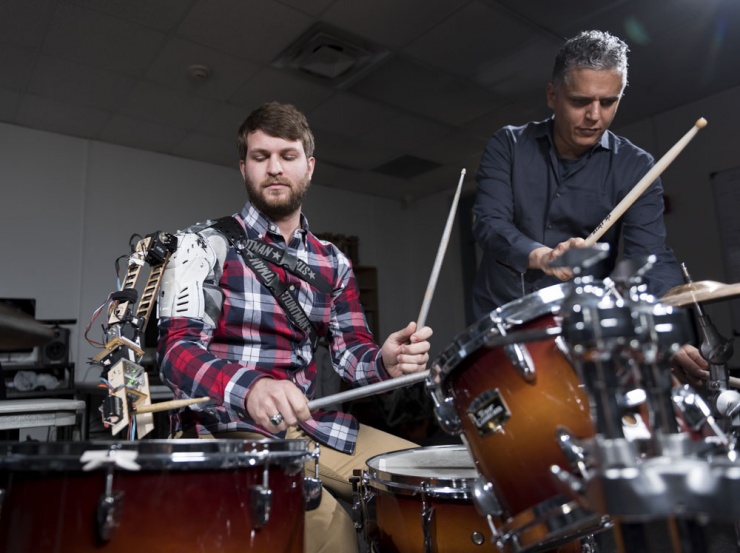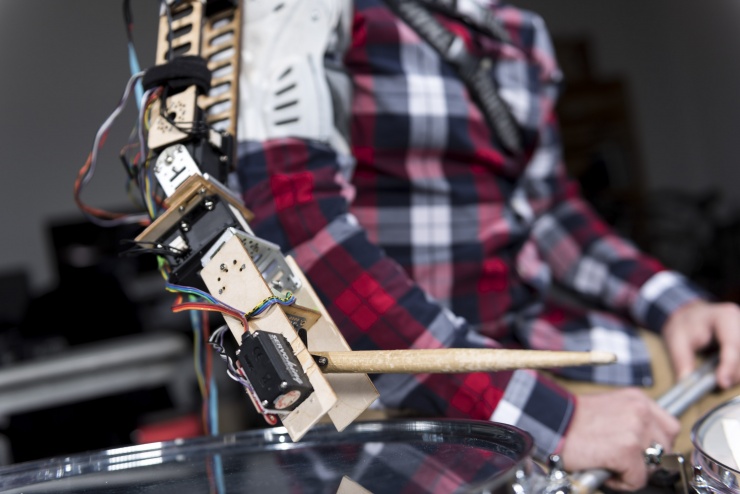Are “smart limbs” in the forecast for the music industry? Researchers from the Georgia Institute of Technology have developed a wearable robotic arm that they attached to a musician’s shoulder — and it can play.

The arm is so smart that it responds to music it hears as well as the human musician’s movements. The team created the limb in an attempt to prove that humans can push their limits and perform out-of-the-ordinary tasks.
“If you augment humans with smart, wearable robotics, they could interact with their environment in a much more sophisticated manner,” said Gil Weinberg, director of the Center for Music Technology. “The third arm provides a much richer and more creative experience, allowing the human to play many drums simultaneously with virtuosity and sophistication that are not otherwise possible.”
So, just how smart is Georgia Tech’s “smart arm”? For starters, the robotic arm knows how to play music, a feat that even humans struggle with. It also has a bit of situational awareness, complete with knowledge about where the instruments around it are located, as well as direction and proximity of the human arms it’s attached to.

The arm was inspired by a prostheses that the team built for an Atlanta-based drummer, which was equipped with two sticks— one with a mind of its own— that allowed the man to continue playing music even after his accident. This is what sparked Weinberg’s journey to create the “third arm” robot.
The team will now work to sync the arm’s movements with actual brain activity, as many other research teams have been working to do as well. The Georgia Tech team wants to be able to identify patterns that would allow the arm to change musical instruments or position when the musician just “thinks” about changing up the tempo or instruments.
Musicians aren’t the only people who’d benefit from the third-arm technology. According to Weinberg, other applications include the medical field, where doctors could recruit the help of a third arm for assistance with surgeries.
Watch the robot in action in the video below.


Comments are closed, but trackbacks and pingbacks are open.